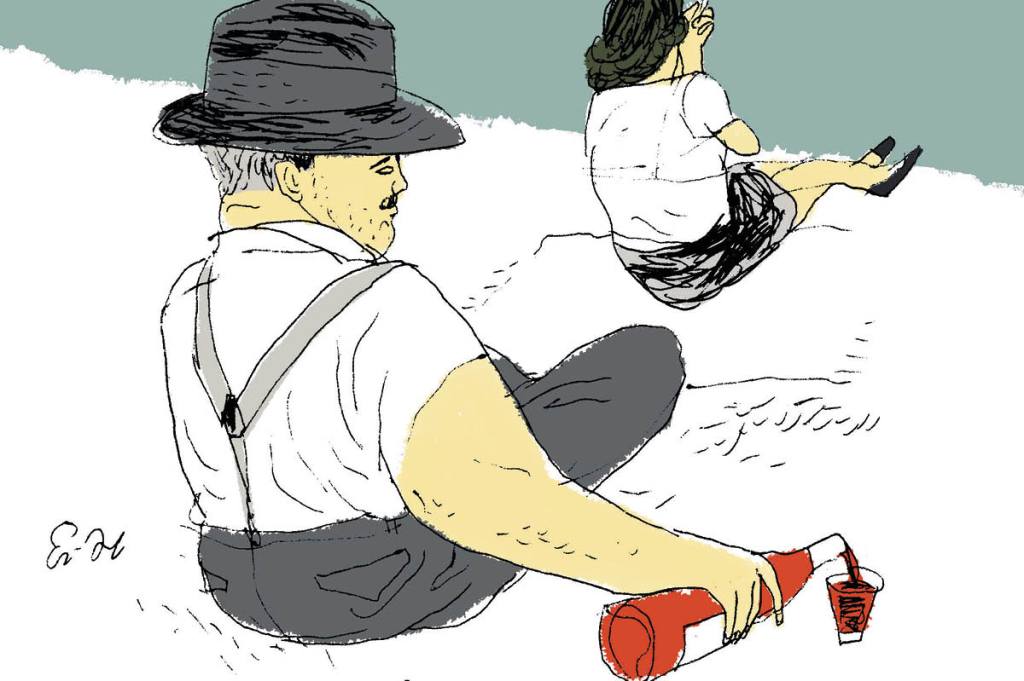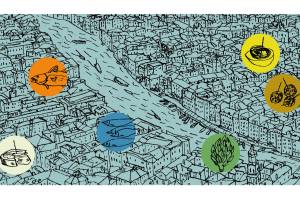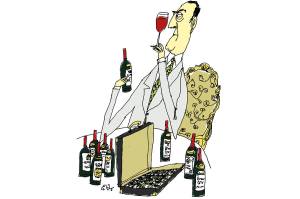Just as night watchmen are constrained by duty to make their rounds, so are writers about wine. Sometimes the rounds are seasonal. Beaujolais Nouveau, for example, is released every year on the third Thursday of November at 12:01 a.m., just a few weeks after the September harvest. Gamay, the grape that makes Beaujolais, can be fresh, floral and ruby-like in this nymphet incarnation. Beaujolais Nouveau lacks the depth, succulence and complexity of more mature instances of Gamay — especially in Morgon and Côte du Py — but it is an agreeable, undemanding picnic wine that goes well with your preferred instantiation of déjeuner sur l’herbe.
Its release is also an occasion for wine writers (as well as the wine-going public) to cluster around the many celebratory events at which its producers provide samples of their wares hoping for your praise (in the case of the writers) and your custom (in the case of the public).
There are many other such gatherings, some sponsored by producers or wine shops, restaurants or other magnets to the convivial. Together with a few friends, I recently had the pleasure of participating in one such symposium (that’s Greek for “drinking party”) at which some two dozen different wines, mostly French, were on offer for study and delectation.
Our party of six congregated with perhaps fifty other pilgrims. Loins girded, we undertook the task of sipping, swishing, savoring, then spitting or swallowing as many of the offered potations as we could decorously sample in the time allotted without, of course, neglecting the prescribed ritual of shared analysis and conversation that intervened between one wine and the next.
I made it through thirteen of the two dozen wines on offer. What follows is a very brief summary of my impressions.
Regular readers will recall the trip we took to Auxey-Duresses in the Côte de Beaune last year. There are no grand wines from the region, but there are many good ones, including the Auxey-Duresses Chardonnay from Olivier Leflaive with which I began the evening. We had the 2018 vintage, which the wine mags celebrate as good to excellent and ready to drink: “opulent, open and soft,” said one, and we found it so. You can get a bottle for about $60.
Next up were some storied wines from around Montrachet, a 2014 and 2015 premier cru from Philippe Colin (“Les Chaumées”). Both were excellent, rich, buttery, but with good acid and structure. You will probably pay about $80 for the 2015, about $90 for the 2014. You will be glad you did.
You will also be glad to taste an even greater wine, the 2013 premier cru Chassagne-Montrachet “En Virondot” from Domaine Marc Morey. The production of the special Chassagne is very small but the wine is superb. My sources tell me a bottle can be yours for about $100.
I had one more Chardonnay from the region, the best of the evening, a 1997 Grand cru Bâtard-Montrachet from Domaine Blain-Gagnard. I’ll say just two things: 1) it was stupendous and 2) it will set you back more than $300, but who’s counting?
I then moved south to the Côte Chalonnaise where I tasted one of the best Rullys I have ever had. This 2020 Chardonnay from Domaine A. & P. de Villaine “les Saint-Jacques” is rich and perfectly structured. It’s a steal at about $50.
It was time for some red wines. We started in Burgundy with a 2010 Pommard from Domaine de Courcel Les Vaumuriens. It was fetching, though a little thin. Perfectly respectable for about $50. The 2019 Gevrey-Chambertin “Clos de Meixvelle” from Pierre Gelin had the advantage of being from a truly great year, though it seemed a shame to drink it so young. We made do however, and made a note that a bottle can probably still be had for about $80, a bargain.
We’ll come back to Burgundy before heading off to dinner, but first we stopped by the Rhone for a delectable Syrah/Shiraz, the 2019 Côte-Rôtie “Les Bécasses” from M. Chapoutier, which was full of the food-friendly spiciness and plump, acidic fruitiness characteristic of the grape. It can be yours from about $100.
We then had a handful of outstanding Bordeaux, two Pauillacs from the fabled year 2005, Pontet-Canet (about $150) and Pichon Longueville Comtesse de Lalande ($250 or more). Neither had been open long enough to be showing its best, nor had the 2008 Château Beychevelle (maybe around $150, if you can still find it). Along with Léoville las Cases, it’s one of my favorite Saint-Juliens. We ended our mini trip through Bordeaux with a 2016 Margaux, Château Giscours (about $85-$100). The Margaux was full of yet-to-be-fulfilled promise (also lots of tannin). I hope to check back in about five years.
I promised a quick return to Burgundy. It was for what we all agreed was the most succulent red wine of the evening, the 2019 Domaine Thibault Liger-Belair Nuits-Saint-Georges, a premier cru listing toward grand cru finesse and finish. A great year, a great wine, full of that expanding, complex fruit and delectable mouthfeel one looks for in Burgundy. We were able to have some more over dinner even though some of us could have done with a brief nap first.
This article was originally published in The Spectator’s April 2024 World edition.


















